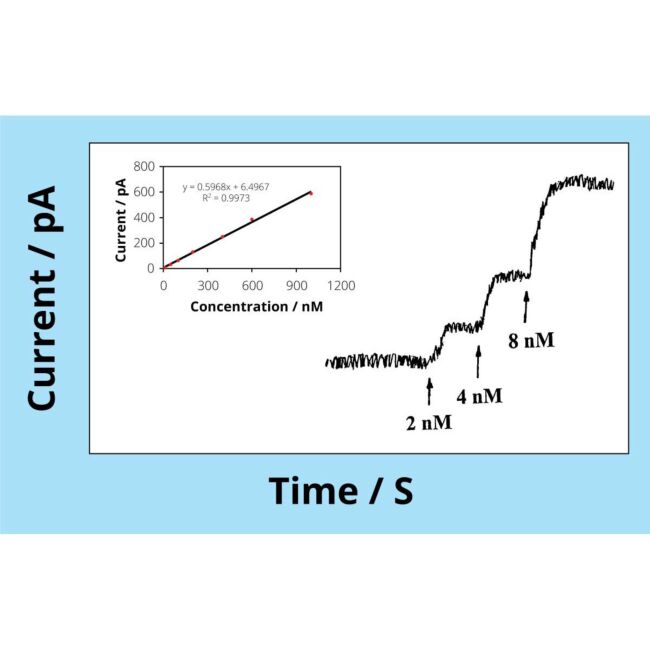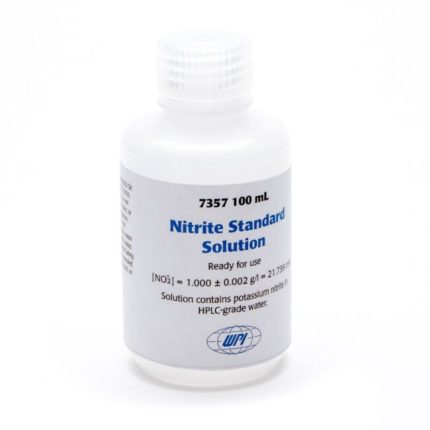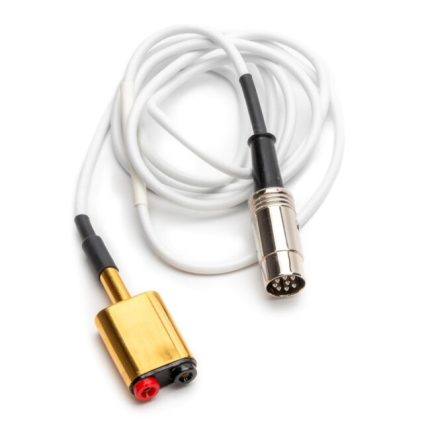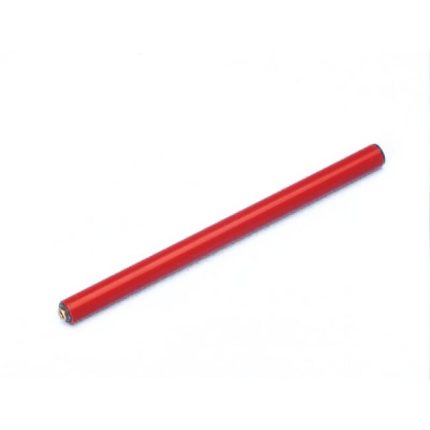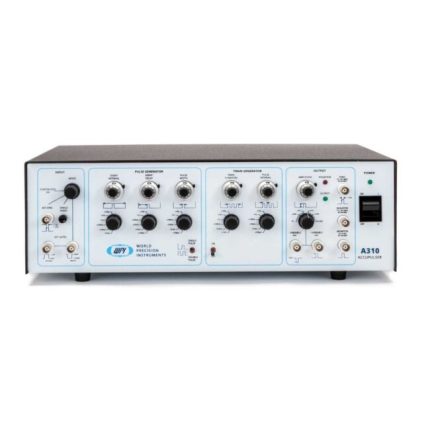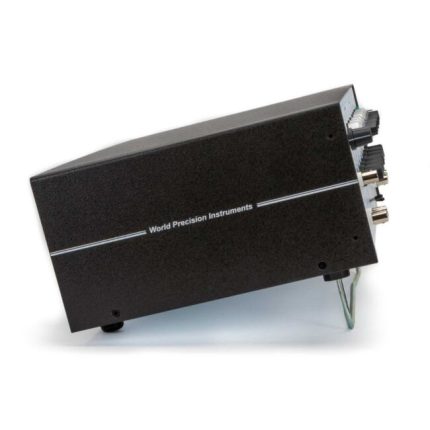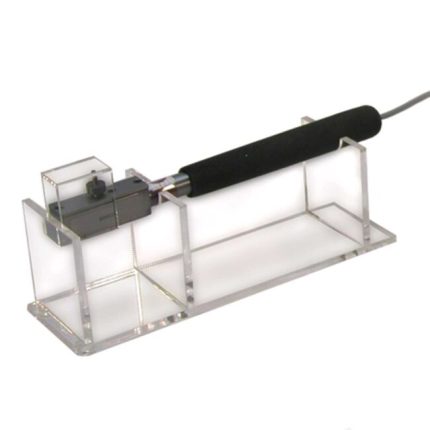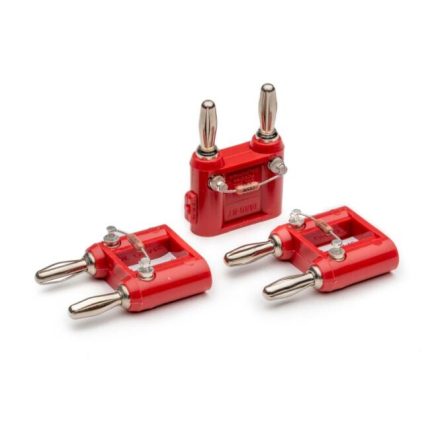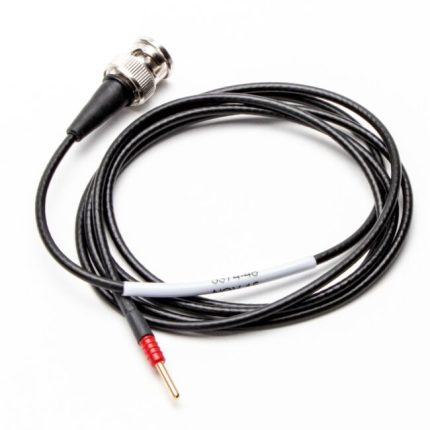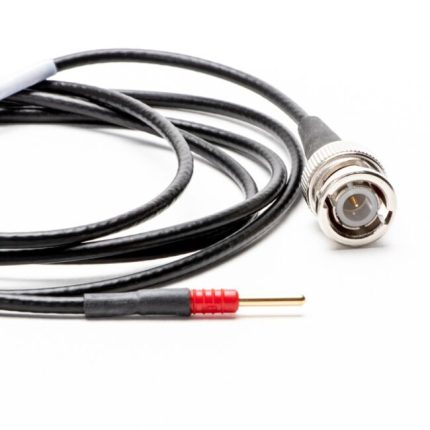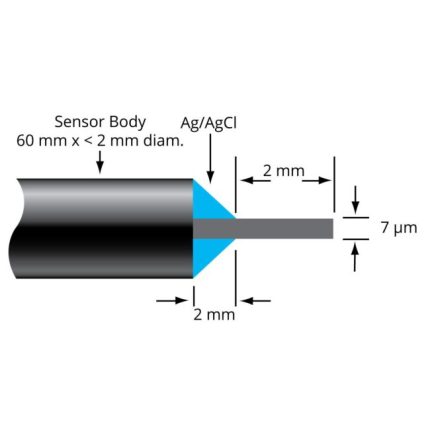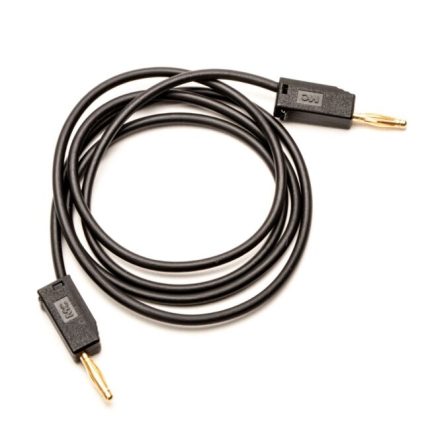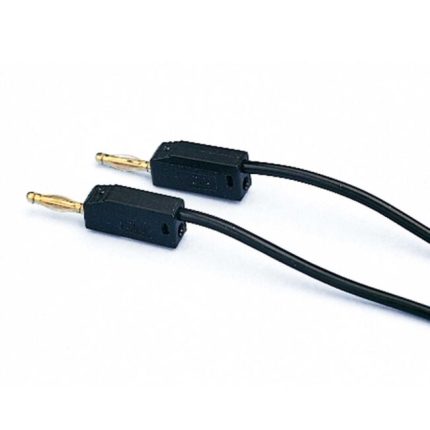The smallest nitric oxide NanoSensor, designed for measurement of NO at the cellular level
- Excellent selectivity to NO: 0.5 pA/nM
- Rapid response time: < 3 seconds
- Highly sensitive
- For use with Apollo1000, Apollo4000, TBR4100 and TBR1025
- Requires cable 91580 (sold separate)
- Package of 3
Benefits
- 100 nm tip diameter with a detection limit for NO of less than 0.5 nM
Applications
- NO measurement at the cellular level
Measurement of NO at the cellular level
The ISO-NOPNM NanoSensor has a tip diameter of just 100 nm (0.1 µm) and a detection limit for NO of less than 0.5 nM — making it indisputably the smallest and most sensitive NO sensor in the world!

Amperometric response of the NO nanosensor (ISO-NOPNM) to the successive additions of 2nM, 4nM, 8nM NO into 0.1M PBS (pH=7.4).
Design
The ISO-NOPNM is based on a novel design in which an electrochemically “activated” composite graphite nanofiber is used as the NO-sensing element. The surface of the Nanosensor is then modified using a unique multi-layered NO-selective membrane. Figure at right illustrates the response of the ISO-NOPNM following successive additions of nanomolar concentrations of NO. The ultra-low noise of the ISO-NOPNM (0.5 pA) enables a detection limit of just 0.5 nM NO. The response time of ISO-NOPNM is less than 3 seconds.
Selectivity of WPI’s NO sensors
The ideal NO sensor should be insensitive to other reactive species likely to be present within the measurement environment. Conventional Nafion coated carbon fiber NO sensor exhibits a large response to such species. WPI’s unique NO sensor technology utilizes an novel surface membrane which amplifies the response to NO whilst eliminating responses to a vast range of reactive species, including nitrite, ascorbic acid, hydrogen peroxide, catecolamines, and much more.


